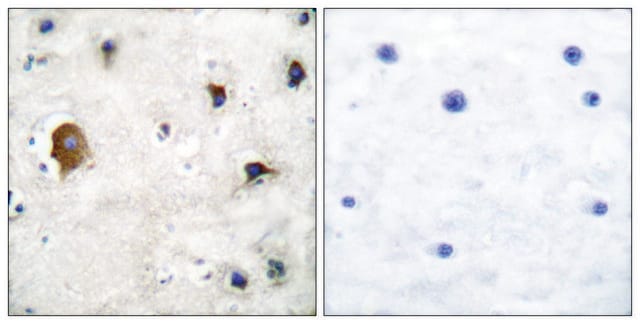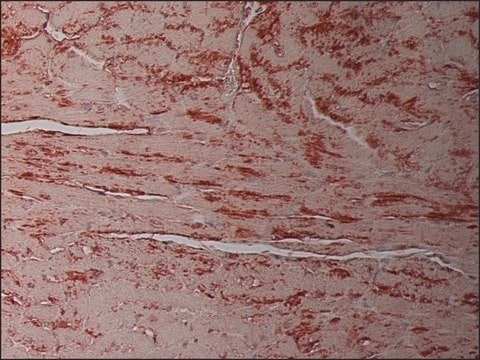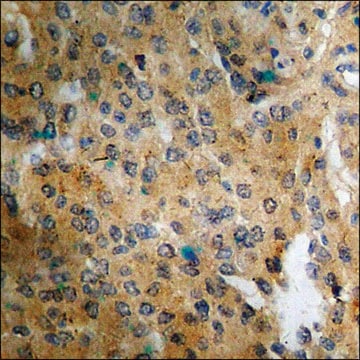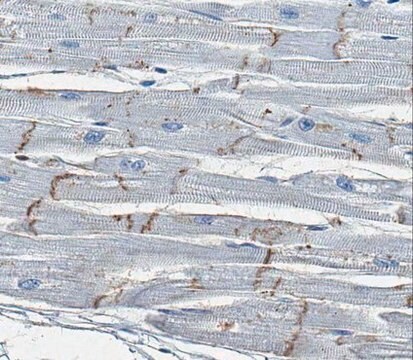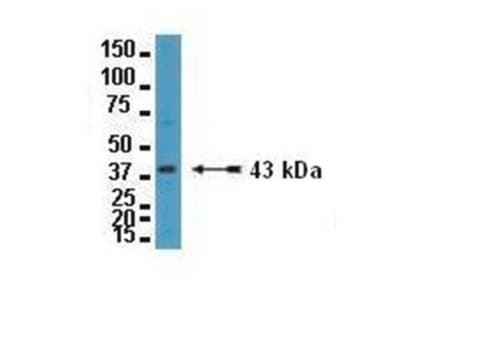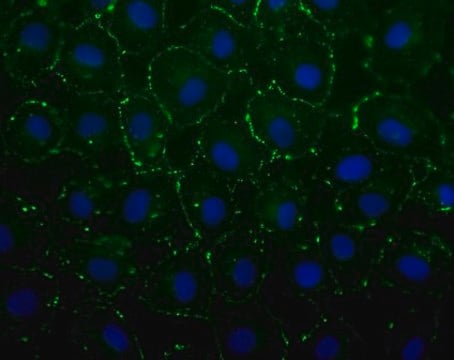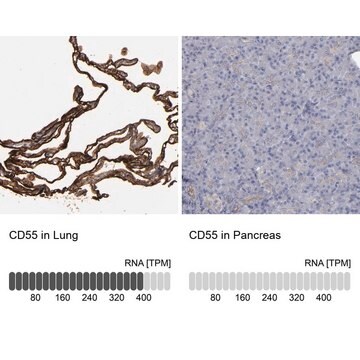AB1728
Anti-Connexin 43 Antibody, CT, cytosolic
Chemicon®, from rabbit
Sinónimos:
Gap Junction alpha-1 Protein (CxA-1)
About This Item
Productos recomendados
origen biológico
rabbit
Nivel de calidad
forma del anticuerpo
affinity isolated antibody
tipo de anticuerpo
primary antibodies
clon
polyclonal
purificado por
affinity chromatography
reactividad de especies
human, rat, mouse
envase
antibody small pack of 25 μg
fabricante / nombre comercial
Chemicon®
técnicas
ELISA: suitable
immunofluorescence: suitable
immunohistochemistry: suitable
immunoprecipitation (IP): suitable
western blot: suitable
Nº de acceso NCBI
Nº de acceso UniProt
Condiciones de envío
ambient
modificación del objetivo postraduccional
unmodified
Información sobre el gen
human ... GJA1(2697)
Descripción general
Especificidad
Inmunógeno
Aplicación
2-10 µg of a previous lot was used in immunoprecipitation.
ELISA:
A previous lot of this antibody was used at 1:10,000-100,000 dilution using 50 - 100 ng Cx43 control peptide (Catalog number AG636) per well.
Optimal working dilutions must be determined by end user.
Cell Structure
Adhesion (CAMs)
Calidad
Western Blot Analysis: 1:500 dilution of this lot detected CONNEXIN 43 on 10 μg of Huvec lysates.
Descripción de destino
Forma física
Almacenamiento y estabilidad
Nota de análisis
Positive Control: Heart tissue, mouse brain tissue lysate.
Otras notas
Información legal
Cláusula de descargo de responsabilidad
Not finding the right product?
Try our Herramienta de selección de productos.
Opcional
Código de clase de almacenamiento
10 - Combustible liquids
Clase de riesgo para el agua (WGK)
WGK 2
Punto de inflamabilidad (°F)
Not applicable
Punto de inflamabilidad (°C)
Not applicable
Certificados de análisis (COA)
Busque Certificados de análisis (COA) introduciendo el número de lote del producto. Los números de lote se encuentran en la etiqueta del producto después de las palabras «Lot» o «Batch»
¿Ya tiene este producto?
Encuentre la documentación para los productos que ha comprado recientemente en la Biblioteca de documentos.
Nuestro equipo de científicos tiene experiencia en todas las áreas de investigación: Ciencias de la vida, Ciencia de los materiales, Síntesis química, Cromatografía, Analítica y muchas otras.
Póngase en contacto con el Servicio técnico
